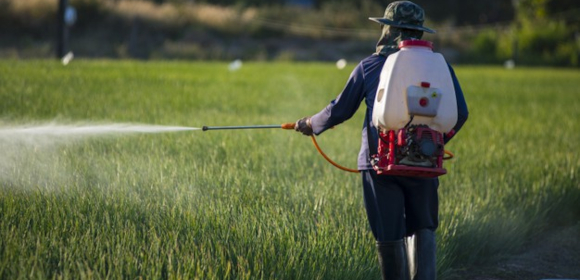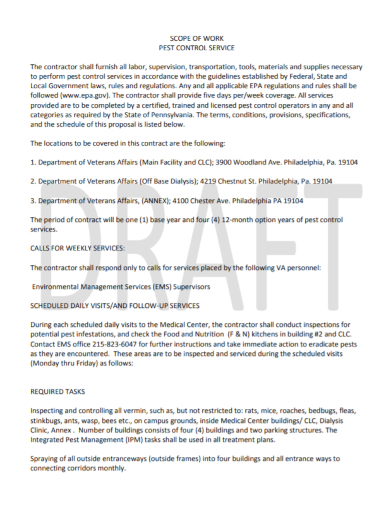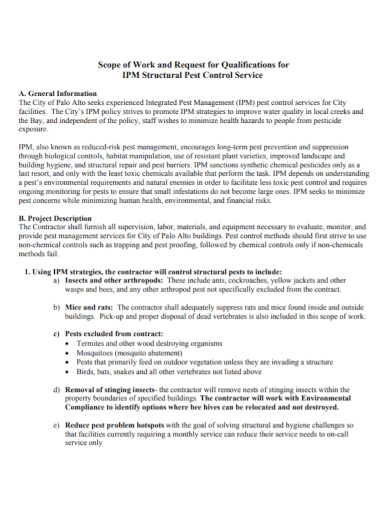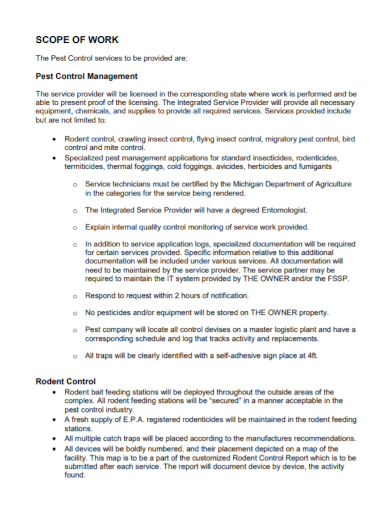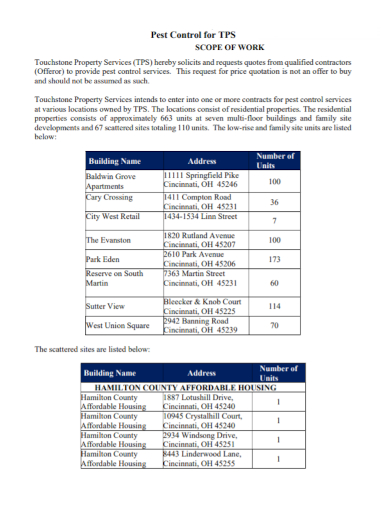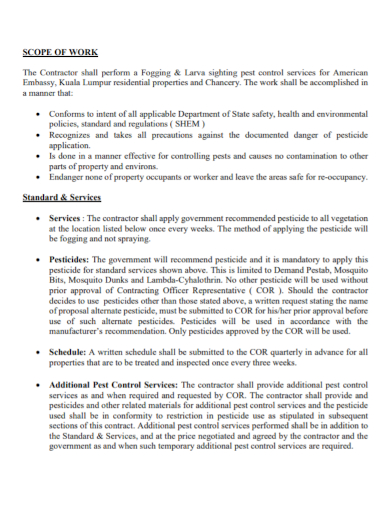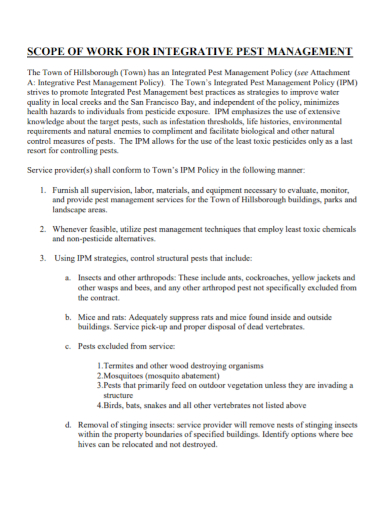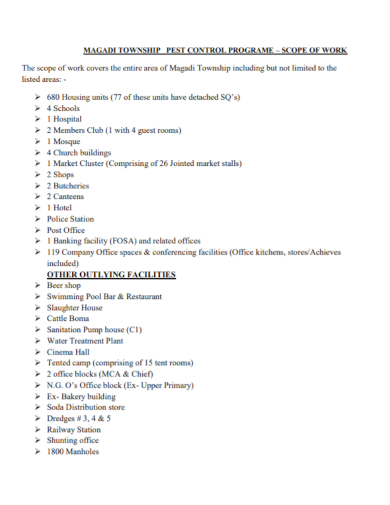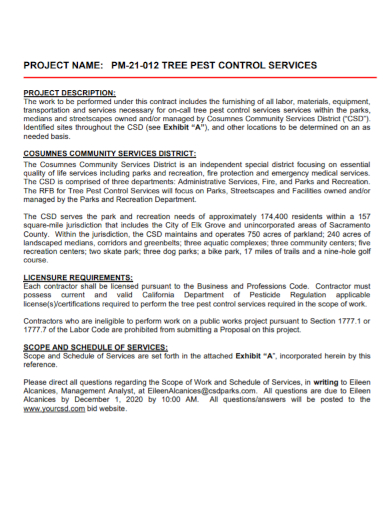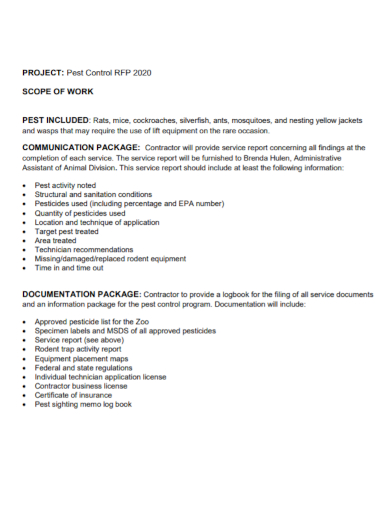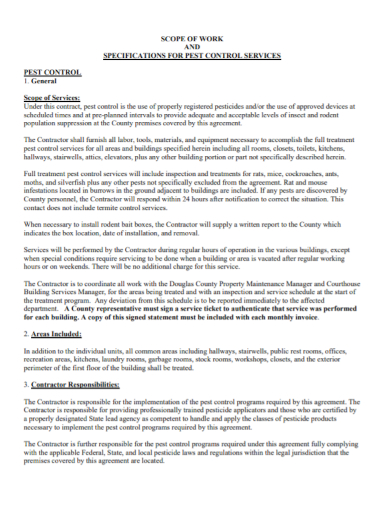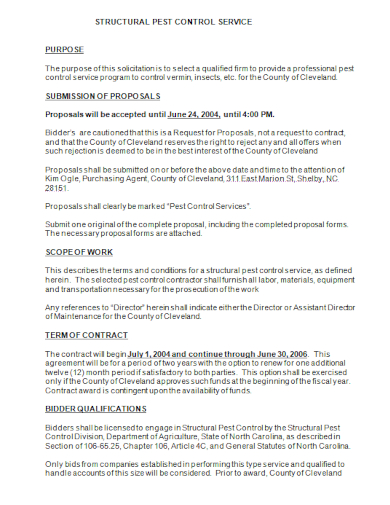Pests are a big problem that everyone faces wherever they live; whether in the city or in the countryside. Pests usually breed in filthy places or when food is abundant. Pests are a menace and costly; they wreak havoc in homes and buildings and cause various illnesses to people and pets. If they can’t be controlled, they can do further destruction that negatively affects the lives of people. And that is why pest control specialists exist to eradicate the nasty pests away from our areas. If your line of business or field of work is related to pest control, this article is for you. If you haven’t experienced making a scope of work document whenever you have a field job to do, this article can help you make one.
10+ Pest Control Scope of Work Samples
1. Pest Control Service Scope of Work
2. Pest Control Contractor Scope of Work
3. Pest Control Management Scope of Work
4. Property Pest Control Scope of Work
5. Pest Control Scope of Work
6. Integrative Pest Control Scope of Work
7. Pest Control Programme Scope of Work
8. Pest Control Project Scope of Work
9. Pest Control Communication Scope of Work
10. Sample Pest Control Scope of Work
11. Structural Pest Control Scope of Work
What is Pest Control and Scope of Work?
Pest control is the regulation of pests such as roaches, ants, bugs, rats, mosquitoes, and termites that infests buildings and homes to prevent damage and diseases caused by these critters. Pest control workers are assigned to exterminate these pests. Their work can be dangerous and more technical since they use various techniques of removing pests.
Scope of work or statement of work, on the other hand, is a document used mostly by project managers that describes the project’s work requirements, activities, deliverables, and timeline of the job. This is useful for doing project fieldwork.
How to Make a Pest Control Scope of Work
Below is the format usually used by contractors in pest control work:
General Information
This part is where you explain the background of the contractor’s business and the client’s too. Explain that the contractor and the client are in agreement of doing pest control in the client’s building or area. Add a definition subheading if there are specific terms that are not generally understood but are going to be mentioned frequently in the scope of work.
Background of work to be done
This where you provide a brief explanation of why the client needs the service of the pest control contractor. You will then transition on to putting a short introduction of the work to be done.
Work description
Now it’s time to state the specific pest control work to be done. You can state the specific areas of the client’s building and the specific pest control work to be done. Some examples of pest control work done by professionals are pest control management (migratory pest control, rodent pest control, insect control, and bird control), electronic and chemical pest control.
Objectives
The next part is the objectives. The objectives will describe the goals of what the pest control workers should achieve on the job. An example of an objective could be “spraying the whole corridor with insecticides to eradicate bugs.”
Deliverables
The deliverables will determine the expected outcome once the work is finished. The deliverables are different from objectives since deliverables must be the result of the work being done. An example of deliverables could be “exterminated rodents occupying between the walls in the kitchen”.
Schedule
The schedule is where you put the day, week, month, and time when the pest control job will happen. Pest control work is not a one-time thing to do, it is part of maintenance work, so it should be done frequently. Discuss with your client how often you should pest control.
Payment
Lastly, the payment will be emphasized on the scope of work. Putting the amount is not necessary to add but you can state how you want to be paid by the client. Again, discuss this with them.
FAQs
What are the different types of pest control?
The different types of pest control are chemical pest control (which uses chemical treatments, such as insecticides or fumigation to effectively eradicate all kinds of pests), biological pest control (which uses predators, parasites, and plant pathogens to kill pests), electronic pest control (which uses electromagnetic gadgets or ultrasonic devices that is usually targeted to vermins), and physical pest control (which uses physical methods such as barriers to protect plants and objects).
What are the benefits of pest control?
They are many benefits of pest control. They can reduce the risk of illnesses and diseases, they lessen the use of toxic chemicals, they ensure a better rest and good night’s sleep and they ensure proper cleaning once the pests have been handled.
How long is pest control training?
Training to become a pest control specialist doesn’t require years of training. A pest control training course takes about three months to complete. In those three months, trainees are taught a comprehensive overview of all aspects of pest control.
Pest control is essential for a healthier environment. That’s why pest control specialists and their work is so important to help save lives and properties. If you want to make a pest control scope of work for upcoming fieldwork, refer to our free sample templates provided above. Just download it to get started!
Related Posts
8+ Price Tag Samples in Illustrator | PSD | Publisher | Apple Pages
Logistics Company Profile
Talent Show Score Sheet
Sample Meeting Minutes Templates
Interview Score Sheet
Football Score Sheet
Employee Profile
Service Quote
Payment Voucher
Lined Paper
Raffle Sheet
News Report
Written Warning
Teacher Lesson Plan
Visitors Log
